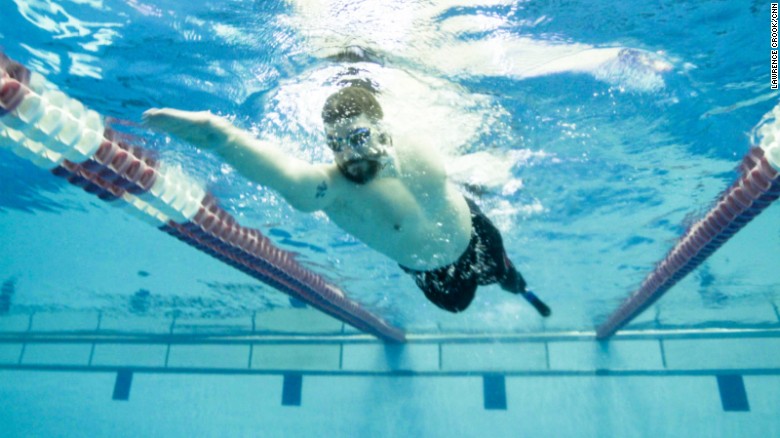Amputees will have the opportunity to purchase, as early as this summer, a first-of-its-kind underwater prosthetic leg called “the Fin.”
According to the Department of Veterans Affairs, 2.6% of veterans return home from war missing a limb. The Amputee Coalition of America estimates there are at least 185,000 new lower extremity amputations every year and about 2 million amputees currently living in the United States.
Developers created the state-of-the-art swim leg for the “clinically unmet need for active amputees who were either hopping in the water without a leg on, or standing in the water with something that just provided support,” said Todd Goldstein, Director of Northwell Ventures 3D Printing Laboratory, who designed and fabricated it.
When retired Marine Corporal Dan Lasko was injured thirteen years ago after his Hummer drove over an IED in Afghanistan, doctors informed him he would need to have his leg amputated from the knee down. “I didn’t even know what a prosthetic leg looked like,” Lasko joked about receiving the news.
Thirteen years later, Lasko was selected to test the new underwater prosthesis that helps amputees maximize propulsion while they swim.
Northwell Health, a network of hospitals and local facilities, were seeking participants to try their new invention and selected Lasko for his love of competing in triathlons and because he has two young boys who love the water.
Since his injury, Lasko has competed in six marathons and more than 30 triathlons around the country. His first was in 2007 with Team Semper Fi of the Injured Marine Semper Fi Fund. “Before my injury I wasn’t really an avid swimmer, but after, I’ve really tried to compete as much as I can.”
Typically Lasko would remove his prosthetic before entering the water. “Before I got this swimming device, I would just take my leg off and get into the water,” he said.
“The Fin attaches to a standard prosthetic, allowing the amputee to enter and exit the water without changing prosthetics,” Goldstein said.
A few months ago Lasko demonstrated the first model at the Nassau Aquatic Center on Long Island, which was built in 1998 for the International Goodwill Games.
The v-shaped fin has multiple holes drilled through it to allow water to flow through the unit as the swimmer kicks. It was made using a Northwell Ventures 3D printer.
Lasko swam so hard while demonstrating the first version — also a clip-on — that he kicked the unit completely off his prosthetic leg. Developers reattached it with zip ties. “My job was basically to try and break this thing, and I guess that’s what I did,” he added.
Northwell Ventures went back to the drawing board and developed a more secure unit to attach to the waterproof prosthesis.
“It’s amazing! When I’m swimming I can feel the propulsion. I mean, it feels like I’m back to normal,” Lasko said. “I already have my fellow wounded warriors asking where they can get this device. There’s absolutely no reason why any disability should hold you back from what you want to do.”



